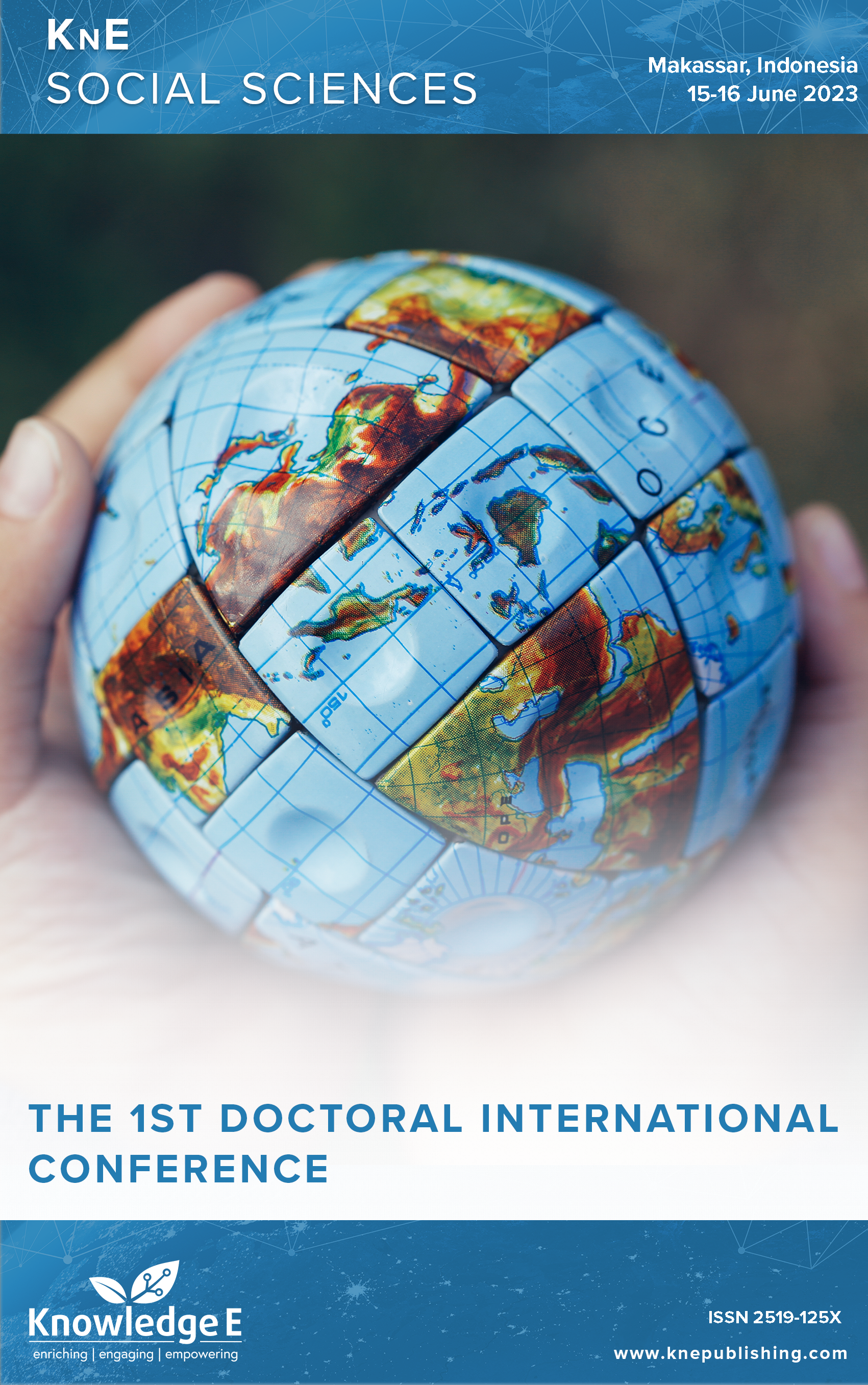Enhancing Public Trust in Land Certificate Public Service in Merauke Regency
DOI:
https://doi.org/10.18502/kss.v8i17.14108Abstract
This research describes e-governance that supports public trust in land certificate public services at the National Land Agency in Merauke Regency, under the condition that e-governance is used to obtain land certificate public services and public trust because e-governance could optimize it.. This study uses a qualitative approach. Data collection techniques included interviews, observations, documents in the form of notes and reports, and documentation. The data analysis technique used in this research involves three stages: data reduction, data display, and withdrawal of conclusions and verification. The results of this study are as follows: first, e-governance of land certificate public services supports public trust through the KKP application. Second, e-governance to public trust supports public trust through the Sentuh Tanahku application and the National Land Agency office web.
Keywords: e-governance, public trust, public services
References
[2] Daraba D. Public trust: What, why, and how can it be applied in creating excellent services? Palarch’s Journal of Archaeology of Egypt: Egyptology. 2021;18(8):3136–42.
[3] Haning MT, Hamzah H, Tahili MH. Public trust: Dalam Pelayanan Organisasi Publik Konsep, Dimensi dan Strategi, Makassar. UPT Unhas Press; 2020.
[4] Tennakoon. E-Governance way forward challenges and opportunities for developing countries. Evidence from Sri Lanka. International Journal of Business Economics, and Law. 2020;21:51–61.
[5] Sadashivam T. A new paradigm in governance: Is it true for e-governance. Journal of the Knowledge Economy. 2010;1(4):302–17.
[6] Gupta S, Chakraverty G. E-governance: A global perspective on a new paradigm. International Journal of Regulation and Governance. 2019;8(1):97–100.
[7] Tyagi A. E-Governance Emerging dimension in India. International Journal of Business and Management Invention. 2014;3(4):31–6.
[8] Iqbal MS. Can e-governance hold back the relationships between stakeholders of corruption? An empirical study of a developing country. Journal of Economics and Business. 2010;8(2):83–106.
[9] Cresswell JW. Research design qualitative, quantitative and mixed methods approaches. 5th ed. SAGE Publications. 2018.
[10] Creswell JW. Research design: Pendekatan Kuantitatif. Kualitatif, In Pustaka Pelajar. 2012.
[11] Sugiyono, Metode Penelitian Kuantitatif dan Kualitatif. Bandung: Alfabeta. 2016.
[12] Prasad LB, Kumar Gupta A. Citizen satisfaction with public service: What factors drive it? Policy and Governance Review. 2022;6(1):78.
[13] Sapru RK, Sapru Y. Good governance through e-governance with special reference to India. Indian Journal of Public Administration. 2014;60(2):313–31.
[14] J. Ahmad and Hardianti. Adopting incremental innovation approaches in the digitalization of village government service. Jurnal Kebijakan dan Administrasi Publik. 2020;24(2):145-162.
[15] Nazneen F, Jagtiani P. E-Governance contemporary facet - A comparative study between India and the UAE. Proceedings of 2nd IEEE International Conference on Computational Intelligence and Knowledge Economy. https://doi.org/10.1109/ICCIKE51210.2021.9410723
[16] Yani AA. Redarming the concept in governance in public administration research: A philosophical discussion. International Journal of Administrative Science and Organization. Bisnis, & Birokrasi. 2020;25(1):1–7.
[17] Fakeeh KA. E-Governance information management models. International Journal of Applied Information Systems. 2016;11(1):10–6.
[18] Ridwanullah a. Implementation of e-governance to improve the civil administration service qualitity in public sector. International Journal of Sciences: Basic and Applied Research. 2022;48(3):168–78.
[19] Hidayat R. Public distrust and enviromental citizenship: Primary impetuses of radical protest in Bima district. Jurnal Ilmu Sosial dan ilmu Politik. 2019;22(3):187-200.
[20] Dawes SS. Evolution and continuing challenges of e-governances Sharon. Public Administration Review. 2008;68:S86–101.
[21] Ambar W. Public trust and regulatory compliance. Jurnal Ilmu Sosial dan Ilmu Politik. 2017;22(1). https://doi.org/10.22146/jsp.28679
[22] Carol WL, Stuart CG. Ethics challenge in public service: A problem solving guide. San Fransisco: Jossey-Bass A Wiley imprint. 2005.

